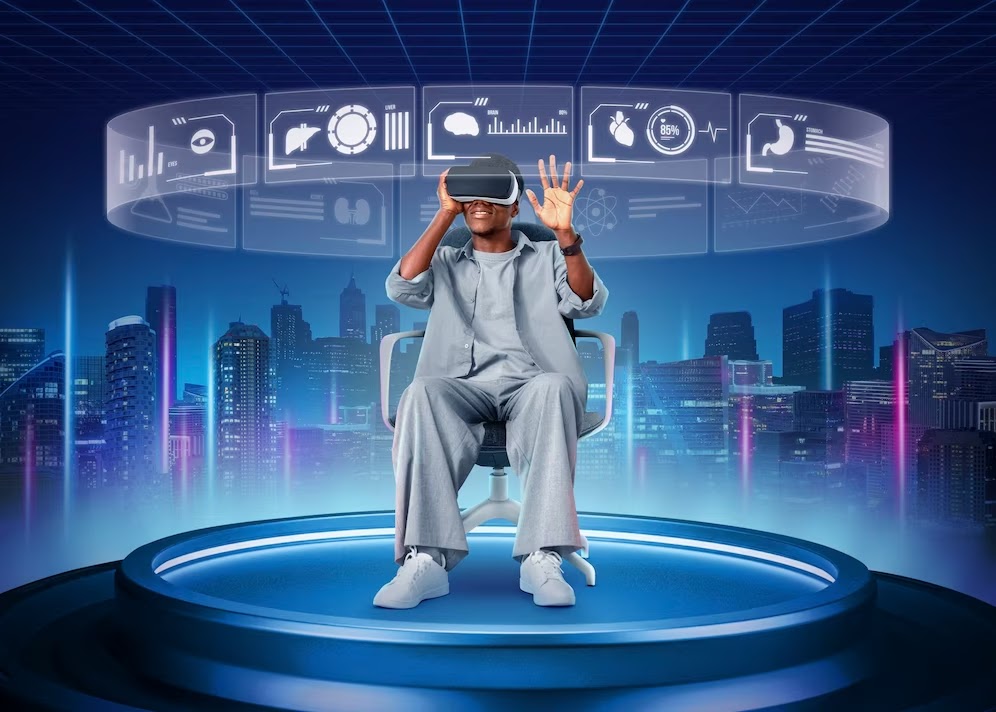How will you feel if you could hear colors or would be able to control objects with your mind or even live forever?
Well, the extraordinary fictional characters that you see in movies are called superheroes, but in real-life those superheroes are called cyborgs.
Cyborgs are a half human and half machine. Yes, you heard that right. Let's meet a few of them.
A body upgrade:
Meet former Professor of Cybernetics at the University of Reading, Kevin Warwick, the world's first cyborg- half man, half machine.
(Cybernetics is the science of communications and automatic control systems in both machines and living things.)
While most of the world was busy upgrading the software of their computers, Professor Warwick was looking at the possibilities of upgrading his body.
In 1998, he went under the knife to implant a silicon chip transponder system onto the median nerve of his forearm, linking his nervous system with a computer. The chip enabled him to crack the neural code that transmits sensations and moves his muscles. Also, he was able to open doors and turn on and off the lights in his path.
Ref: http://cognivence.scicog.fr/projets/forum2008/pages/conferences/warwick.htm
After the success of the silicon chip, on March 14th, 2002, at the age of 48 years, a tiny 100-pin array of microelectrode was surgically implanted into the median nerve of his forearm. The neural interface enables the computers to assess the nervous system via a digital radio transmitter or a hard-wire connection from the connector pad. This made Professor Warwick control a robotic hand as well as a wheelchair. You can learn more about Kevin Warwick here.
The antenna man:
What's your favorite color? Mine is Teal. I know my favorite color because I am privileged enough to see the colors and differentiate them from each other. But the case is not the same with a colorblind person. But, as they say, where there is a will, there is a way.
Let me introduce you to the Co-founder of the Cyborg Foundation and The Transpecies Society and the world's first cyborg artist, Mr. Neil Harbisson.
Ref: https://en.wikipedia.org/wiki/Neil_Harbisson
Mr. Harbisson was born with achromatopsia, a rare form of colorblindness, that made his world black and white.
So, he decided to shed the black-and-white chapter of his life. And, in order to make his world colorful, he co-devised an antenna that picks up the colors around him through a camera and translates the colors into vibrations transmitted directly into his skull.
His brain exemplifies these vibrations and makes him "hear" colors. Also, he is not only able to hear the visible frequencies (colors that a human can see), but he can hear the invisible frequencies (colors beyond the normal human spectrum) like ultraviolet and infrared frequencies.
In a National Geographic interview, he said that "There is no difference between the software and my brain or my antenna and any other body part. Being united to cybernetics makes me feel that I am technology."
In The Guardian interview, he said that "For me, red isn't the color of passion as it is for many humans. It's a serene color. Violet, though, is savage to my ears.
You can learn more about Mr. Harbisson here and his foundation here.
The cyborg cockroach:
The cyborgs are not limited to human beings. Research scientists have successfully created cyborg cockroaches. Yes, you heard that right.
In the future, cyborg cockroaches and rescue teams might join forces to save people trapped in natural calamities like earthquakes, landslides, and many others.
A team of researchers at the RIKEN Institute in Japan chose Madagascar hissing cockroaches for the experiments because they are 2 to 4 inches long and have no wings.
Fig: Cyborg Cockroach
Ref: https://www.riken.jp/en/news_pubs/research_news/pr/2022/20220905_2/index.html
The team has successfully designed a rechargeable cyborg cockroach - half insect and half machine. A tiny integrated circuit is laden on the body of cockroaches which is being controlled by a remote controller. The cyborg cockroach can be used for urban search and rescue missions, environmental monitoring, and inspection of hazardous areas.
You can learn more about the cyborg cockroach here.
Technology will continue to advance, and we should be prepared for all sorts of species, natural or robotic. One day, who knows that your neighbors will be cyborgs or perhaps you will have to become a cyborg to cope with a future dominated by artificial intelligence.
Let me know your thoughts in the comment section.
Author:
garima.thakur6@gmail.com
.jpg)





Comments
Post a Comment